Abstract
Infection of breeding hens with Eimeria maxima induces production of parasite-specific antibodies which are transferred, via the egg yolk, to hatchling chicks. These antibodies (immunoglobulin G) are highly protective, mediating up to a 97% reduction in oocyst excretion in challenged hatchlings. However, the degree of maternally derived immunity transferred by the hens to their offspring declines with increasing time after infection of the hens. This decline in immunity is directly related to declining immunoglobulin G titers. However, sera from highly protected hatchlings recognize only a very few E. maxima proteins on Western blots (immunoblots). In particular, a 230-kDa protein band is outstanding for its association with maternally derived immunity to E. maxima in hatchlings. This band was excised from a sodium dodecyl sulfate-polyacrylamide gel electrophoresis (SDS-PAGE) preparative gel of crude merozoite protein extract. The SDS-PAGE cutout was emulsified in Freund's adjuvant and injected, intramuscularly, into six breeding hens on two occasions, 2 weeks apart. Eggs were collected from these hens 28 to 39 days after the second injection, and the hatchlings from these eggs were challenged with 150 sporulated oocysts of E. maxima. Subsequent oocyst excretion in these hatchlings was, on average, 54% lower than oocyst excretion by control chicks but only 37% lower (significant at P < 0.05) than that by chicks from hens sham immunized with Freund's adjuvant. The latter result is apparently due to the ability of the adjuvant to induce production of antibodies which recognize Eimeria spp. and thereby transfer some degree of protection to hatchlings. These experiments indicate that protective, maternally derived immunoglobulin G antibodies may be useful for the identification of putative anticoccidial vaccine candidates.
Full text
PDF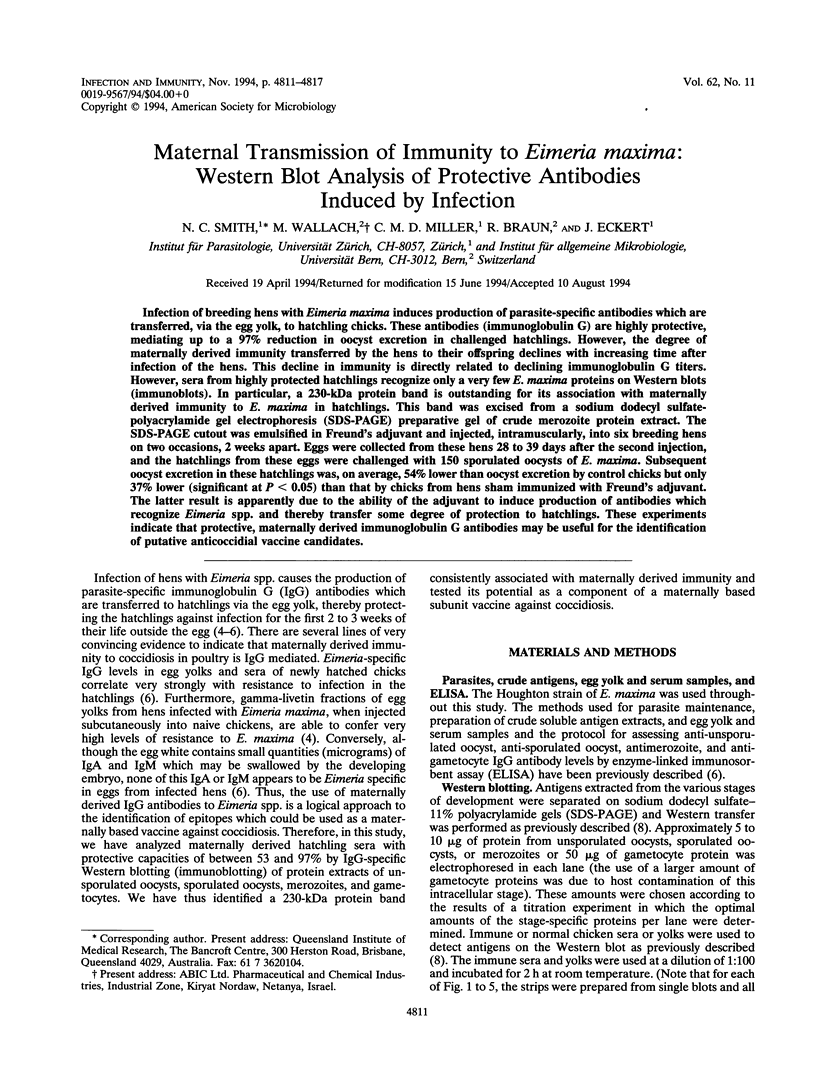
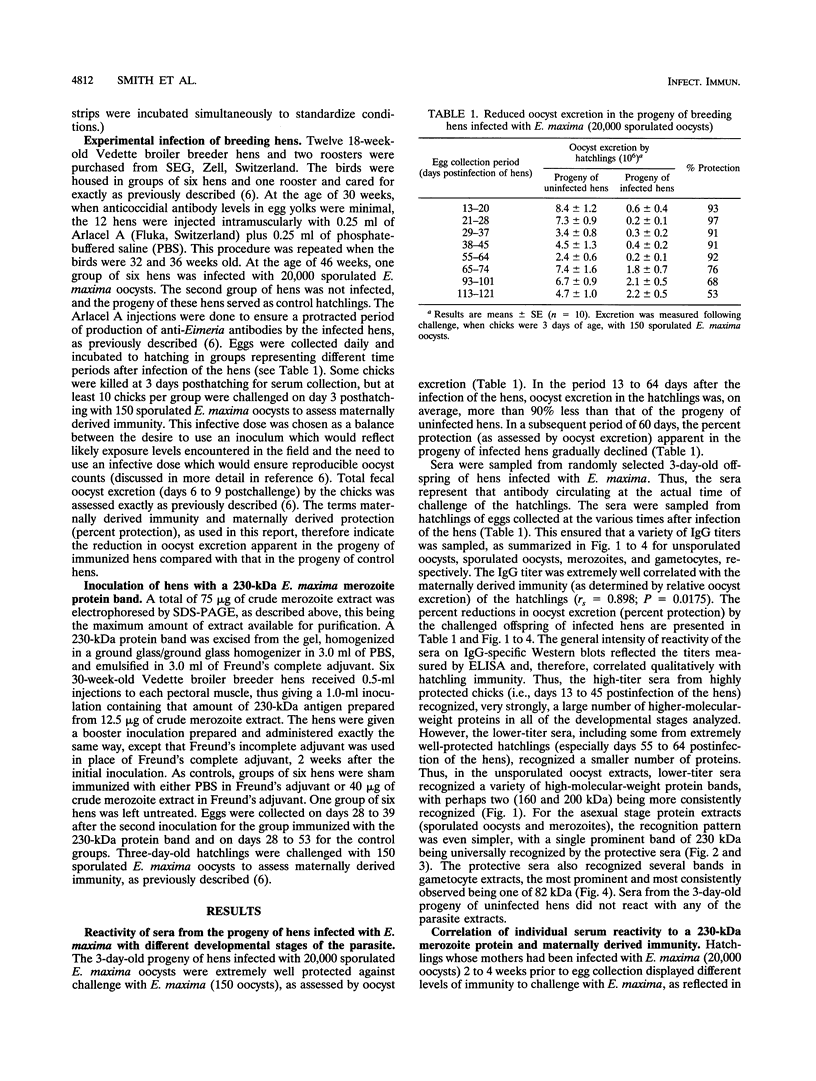
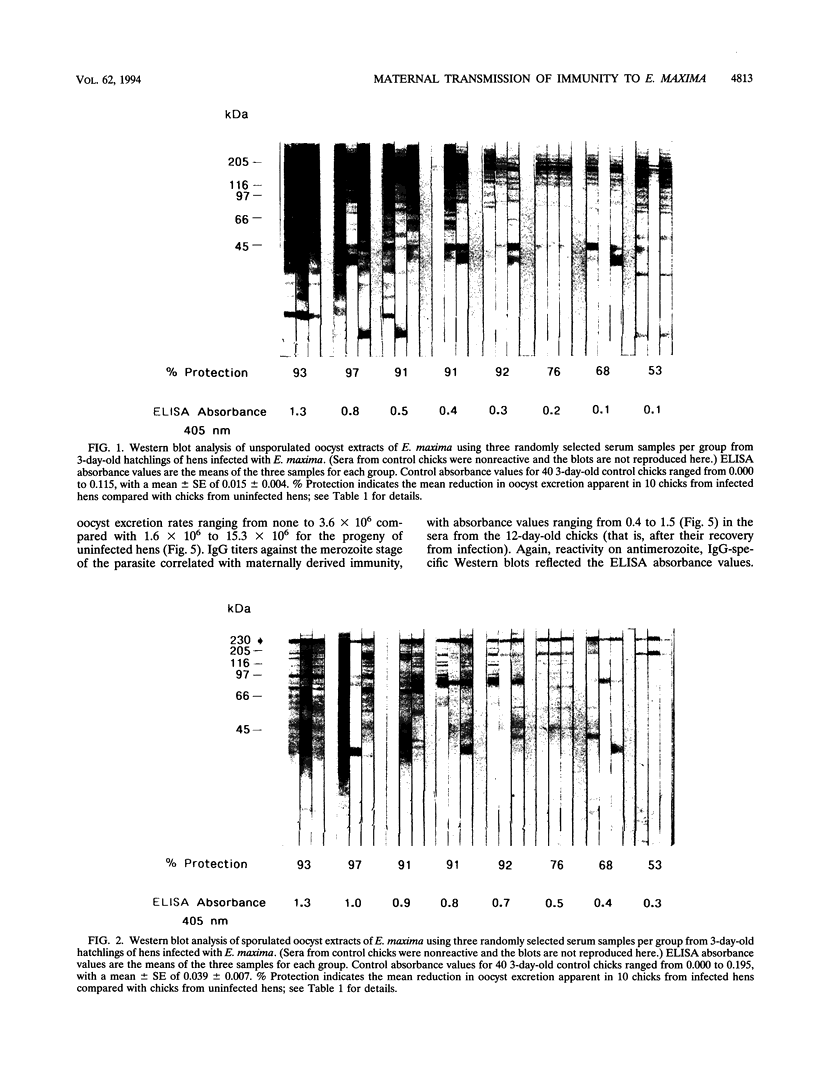
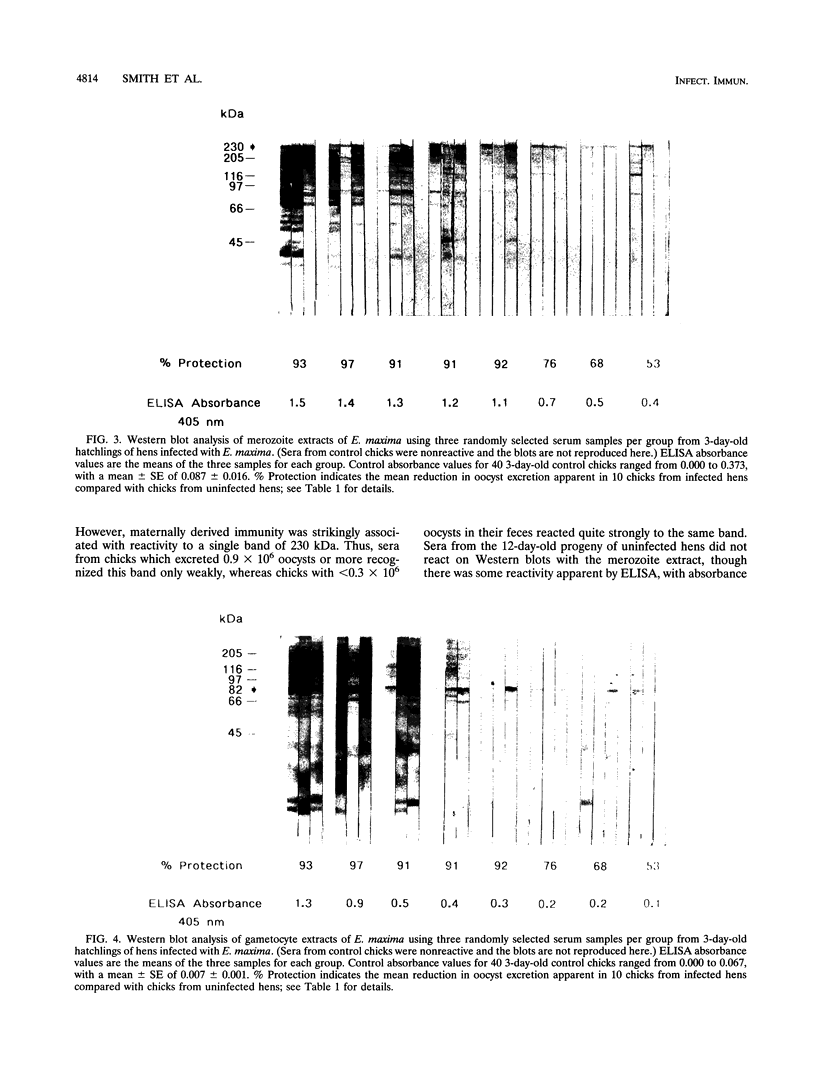
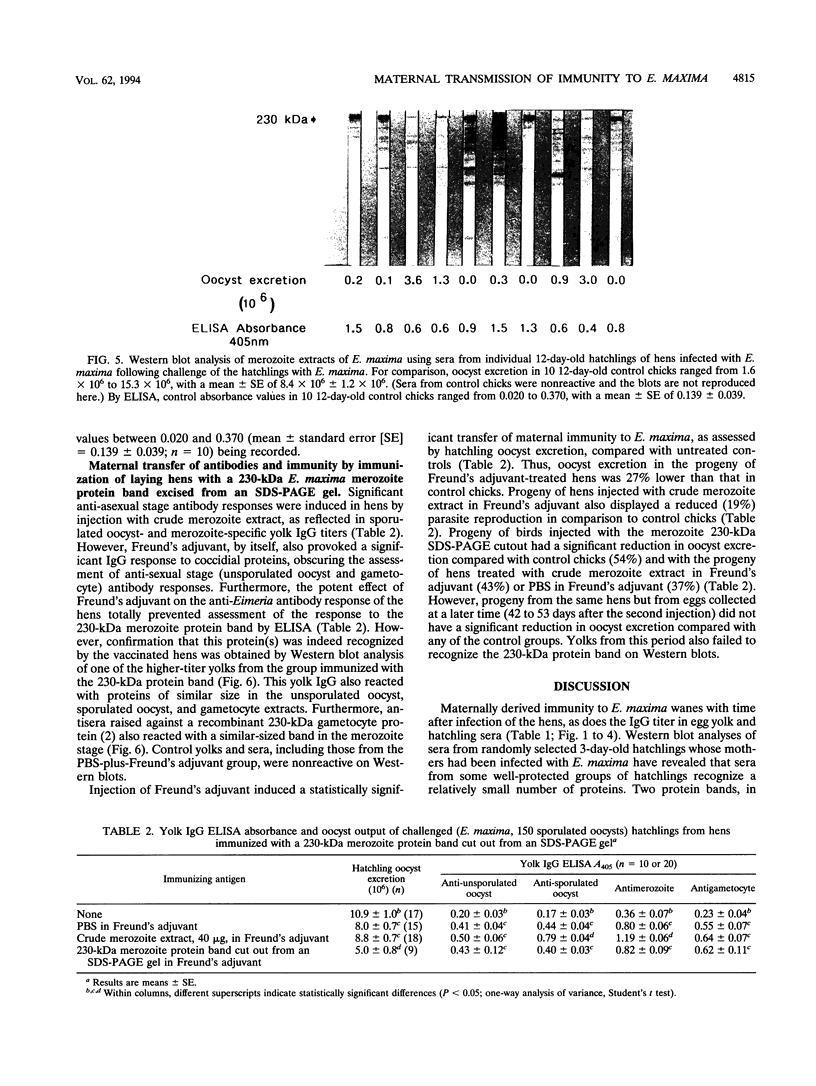
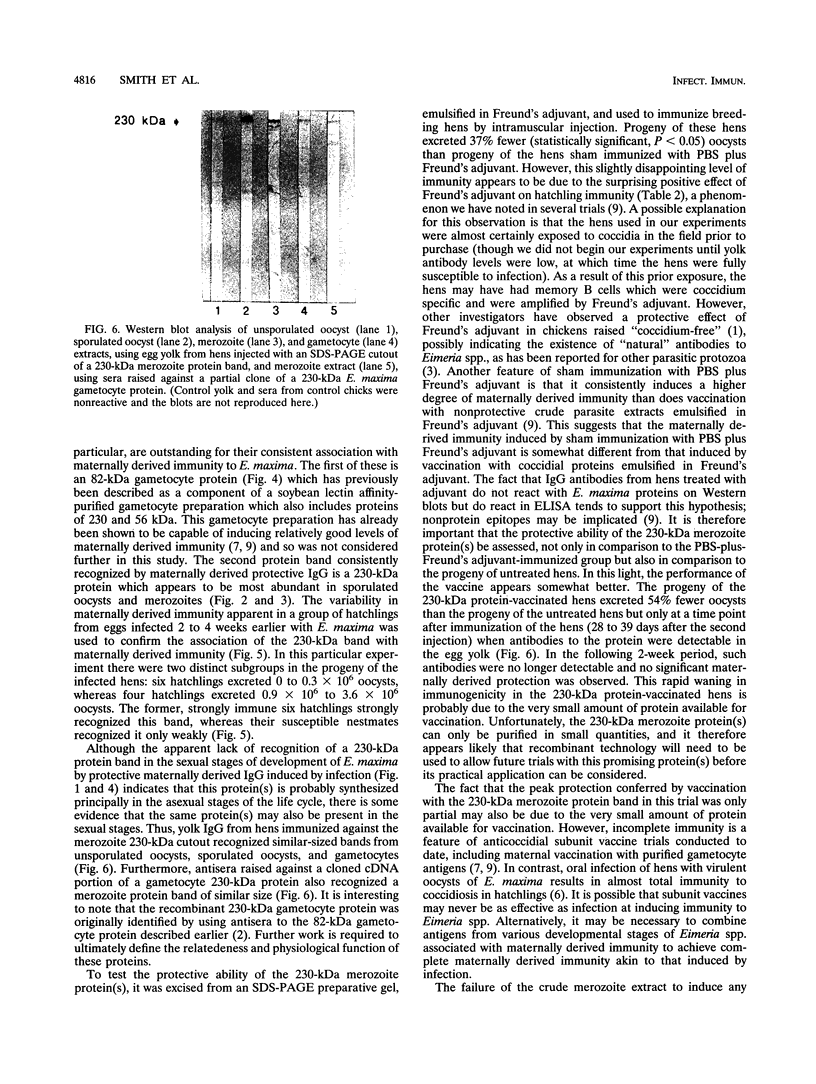
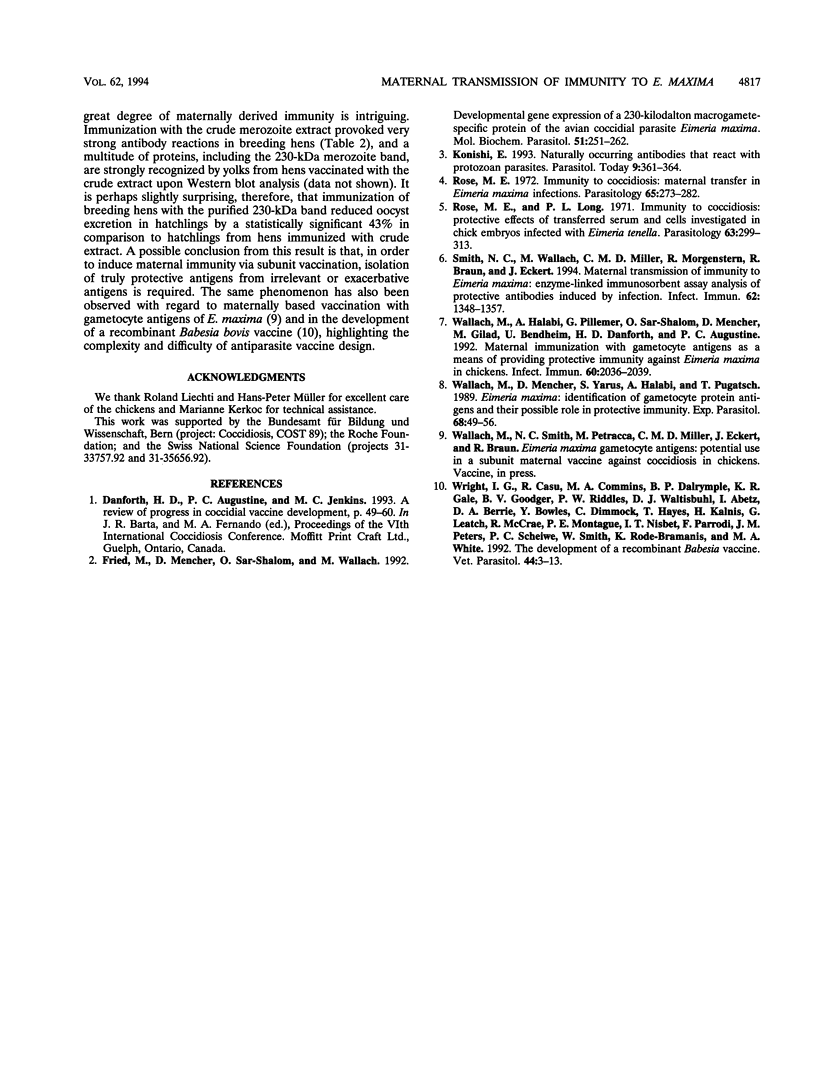
Images in this article
Selected References
These references are in PubMed. This may not be the complete list of references from this article.
- Fried M., Mencher D., Sar-Shalom O., Wallach M. Developmental gene expression of a 230-kilodalton macrogamete-specific protein of the avian coccidial parasite, Eimeria maxima. Mol Biochem Parasitol. 1992 Apr;51(2):251–262. doi: 10.1016/0166-6851(92)90075-u. [DOI] [PubMed] [Google Scholar]
- Konishi E. Naturally occurring antibodies that react with protozoan parasites. Parasitol Today. 1993 Oct;9(10):361–364. doi: 10.1016/0169-4758(93)90083-r. [DOI] [PubMed] [Google Scholar]
- Rose M. E. Immunity to coccidiosis: maternal transfer in Eimeria maxima infections. Parasitology. 1972 Oct;65(2):273–282. doi: 10.1017/s0031182000045054. [DOI] [PubMed] [Google Scholar]
- Rose M. E., Long P. L. Immunity to coccidiosis: protective effects of transferred serum and cells investigated in chick embryos infected with Eimeria tenella. Parasitology. 1971 Oct;63(2):299–313. doi: 10.1017/s0031182000079610. [DOI] [PubMed] [Google Scholar]
- Smith N. C., Wallach M., Miller C. M., Morgenstern R., Braun R., Eckert J. Maternal transmission of immunity to Eimeria maxima: enzyme-linked immunosorbent assay analysis of protective antibodies induced by infection. Infect Immun. 1994 Apr;62(4):1348–1357. doi: 10.1128/iai.62.4.1348-1357.1994. [DOI] [PMC free article] [PubMed] [Google Scholar]
- Wallach M. G., Mencher D., Yarus S., Pillemer G., Halabi A., Pugatsch T. Eimeria maxima: identification of gametocyte protein antigens. Exp Parasitol. 1989 Jan;68(1):49–56. doi: 10.1016/0014-4894(89)90007-6. [DOI] [PubMed] [Google Scholar]
- Wallach M., Halabi A., Pillemer G., Sar-Shalom O., Mencher D., Gilad M., Bendheim U., Danforth H. D., Augustine P. C. Maternal immunization with gametocyte antigens as a means of providing protective immunity against Eimeria maxima in chickens. Infect Immun. 1992 May;60(5):2036–2039. doi: 10.1128/iai.60.5.2036-2039.1992. [DOI] [PMC free article] [PubMed] [Google Scholar]
- Wright I. G., Casu R., Commins M. A., Dalrymple B. P., Gale K. R., Goodger B. V., Riddles P. W., Waltisbuhl D. J., Abetz I., Berrie D. A. The development of a recombinant Babesia vaccine. Vet Parasitol. 1992 Sep;44(1-2):3–13. doi: 10.1016/0304-4017(92)90138-y. [DOI] [PubMed] [Google Scholar]








